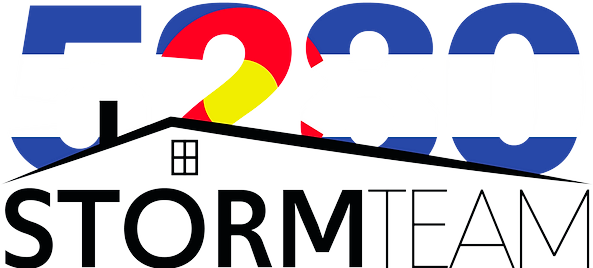Hail are frozen water droplets that become balls that vary in size, from tiny to larger. During a hailstorm, everything on its path suffers damage from the impact. From windows to your roofing system, nothing escapes the destruction. Moreover, the damage differs depending on the hail size, the direction and wind speed. As a result, the damage on the roof can be hard to spot since you may not know what you are looking for. If you live where there are likely heavy storms, your roof is vulnerable to hail accidents. After storms, a roof inspection is essential to assess any damages. Hail roof damage takes several forms, and you can minimize the destruction by identifying them.
Cracks in Shingles
When Hail strikes the asphalt shingles, they crack. The cracks occur mainly on the surface and may indicate more profound damage to the shingle. This damage is functional since the cracks change how your shingles perform and appear. Over time, the shingles detach entirely from the roof, exposing the water roof structure.
In effect, moisture seeps inside, and the water destroys the attic and the roof deck. Although you may not see the cracks, the impact of the Hail happened inside the shingle. While not all cracks are a risk, they leave your roof bare and without protection from external forces.
Bruised Shingles
As hail hits asphalt shingles, it bruises them. Shingle bruises appear as irregular circles that become soft and loose due to the impact. These bruises endanger the shingle’s integrity, which in due time becomes a leak problem, or the roof starts to disintegrate gradually. Storms that involve large hail balls are responsible for the bruised shingles. It is also important to remember that as the roof ages, it is more prone to bruises; thus, older roof shingles bruise more during both heavy storms and light storms.
Missing Granules
The portion of shingles that have a surface sandpaper appearance are the granules. Hail storms separate the granules from the asphalt shingles, resulting in bald areas. Since the granules are the shingle’s defense, they expose the asphalt to exterior elements when lost. The remaining shingle is defenseless for the next storm, and more damage is inevitable.
You must check the gutters to examine whether there are any lost granules. Considered the easiest way to detect the damage from the storm, once you confirm the loss of granules, contact an expert contractor to analyze your roof.
Fragile Self-Seal Strips
The seal in between your shingles can wear down due to hail storms. A weak seal leads to shingles blown away, exposing your roof. Once damage starts on a shingle, it cannot be undone and causes leaks, negatively impacting your roof structure. Weakened seal strips even cause the other shingles to break down and wear down.
Broken and Exposed Fiberglass Mat
It can be hard to detect broken fiberglass without professional help. The impact of hail can make the fiberglass mats crack to a point where only an entire replacement will solve the issue. This damage is cosmetic as it prompts the shingles to break away from the underneath fiberglass, exposing them.
Dents in Metal Roofs
Despite metal roofs being more durable, hail can still affect them and reduce their value. Huge hail balls can hit the roof very hard, creating dents on metal roofs, which are a lousy sight and a sign of cracked metal. A cracked metal allows moisture inside the roofing material, which can be a breeding ground for mold and mildew. While some dents can be cosmetic damage, it may be wise to have a roofing contractor take a look to determine the extent of the havoc.
Rust Spots
Metal roofs that hail has impacted can chip and expose paint on them. With exposure comes moisture, which is one factor that encourages rust. Hailstorms become a reason your metal roofs have so much rust, making them aesthetically unpleasing. The more time rust remains on the roof, the more it will spread and cause corrosion. In the end, corrosion results in big holes that allow rain to pass through the walls and into the overall home structure, leaving irreversible damage.
Hail damage can be severe or minor and is among the causes of homeowners filing insurance claims linked to roof replacements. Accessing the damage can be daunting, especially for inexperienced homeowners who need help climbing up on the roofs on their own. Fortunately, you don’t have to go through all that hustle with professionals committed to helping you. 5280 Storm Team is a top-rated roofing team in Colorado that provides restorative services with only the highest quality materials to ensure your roof lasts for a long time. Please don’t allow the effects of the storm to bring you down. Contact us today and get your roof back on track.

